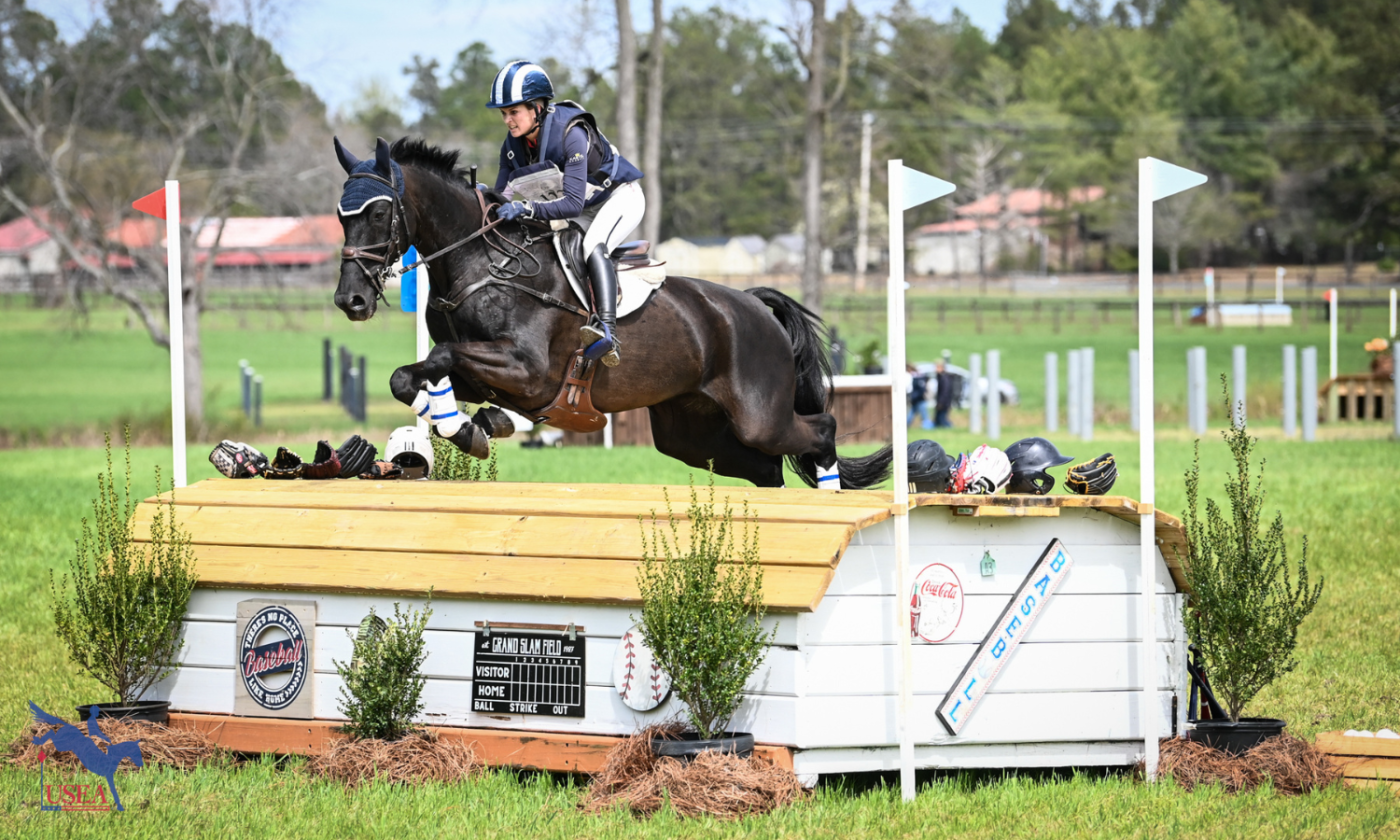Renew Your USEA Membership for the 2023 Season Today LEARN MORE

There is no better feeling than galloping through your cross-country course feeling like you are hitting every distance right out of stride and making easy work of the time... and then you see a few jumps in close proximity to one another and think to yourself, "Wait, which jump is mine?" Knowing the different flags you might encounter on cross-country and what they mean is critical to your success in this phase of eventing. Thankfully, these flags are clearly outlined in the USEF Rules for Eventing, and we have included the applicable excerpt to help you better understand.
Text has been taken directly from the USEF Rules for Eventing with emphasis added by the USEA.
EV144 Cross-Country Phase Courses
1. MARKING OF THE COURSE.
a. Red or White Boundary Markers - These must be used to mark the start and finish lines,
to mark compulsory passages, and to define Obstacles. Boundary markers must be placed
so the Athlete passes through with the red marker on their right and the white marker on
their left. In cases where courses for two or more levels are marked at the same time, only
markers which form the course for the relevant level are considered to be in effect at any
one time.
b. Yellow Directional Markers - These may be used to show the general direction of the
course. Where necessary, they may be superimposed with the first letter or color of the
level. Passing close to them is not required.
c. Numbers and Letters - Each Obstacle must be numbered. Obstacles with elements (see
EV145.1) must also be lettered (e.g., A, B, C, etc.). Compulsory passages must be marked
with the first letter of the level and numbered consecutively. If an Event is running FEI levels
and national levels of the same height level, the national level must be differentiated from
the FEI level(s).
d. Numbers and letters must be colored as follows:
1. Advanced - white letters, blue background;
2. Intermediate - white letters, red background;
3. Preliminary - white letters, green background;
4. Modified - orange letters, blue background;
5. Training - white letters, black background;
6. Novice - black letters, white background;
7. Beginner Novice - black letters, yellow background;
8. Or as designated by the Organizer and printed on the course map.
d. Start and Finish Signs - In addition to the red and white boundary markers, the start and
finish lines must also be marked by distinct signs.
e. Stopping Points - These must be marked by a peg painted in a vivid color, surveyor’s
markers, or by a sign.
Want to catch up on past rule refreshers? Click here.